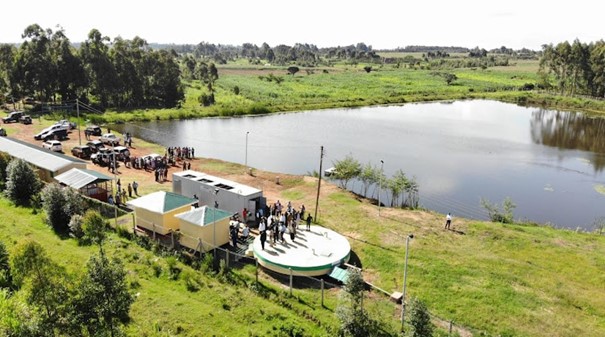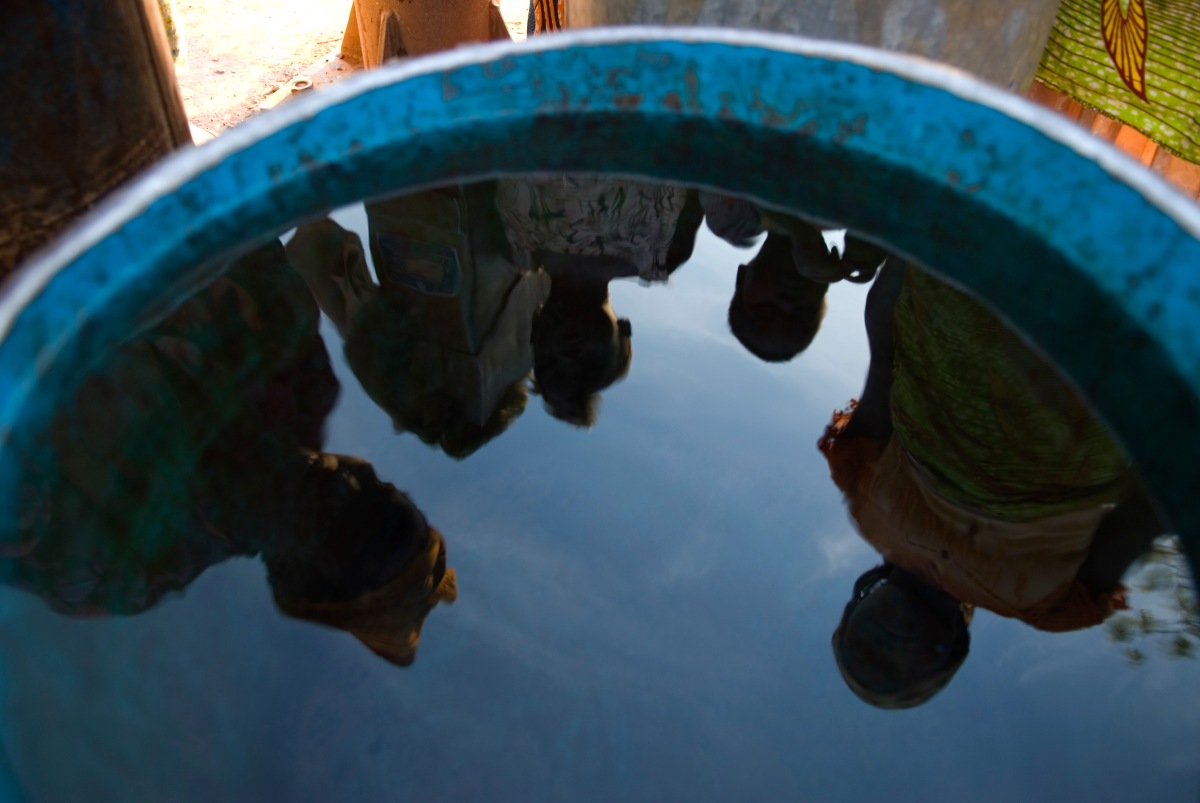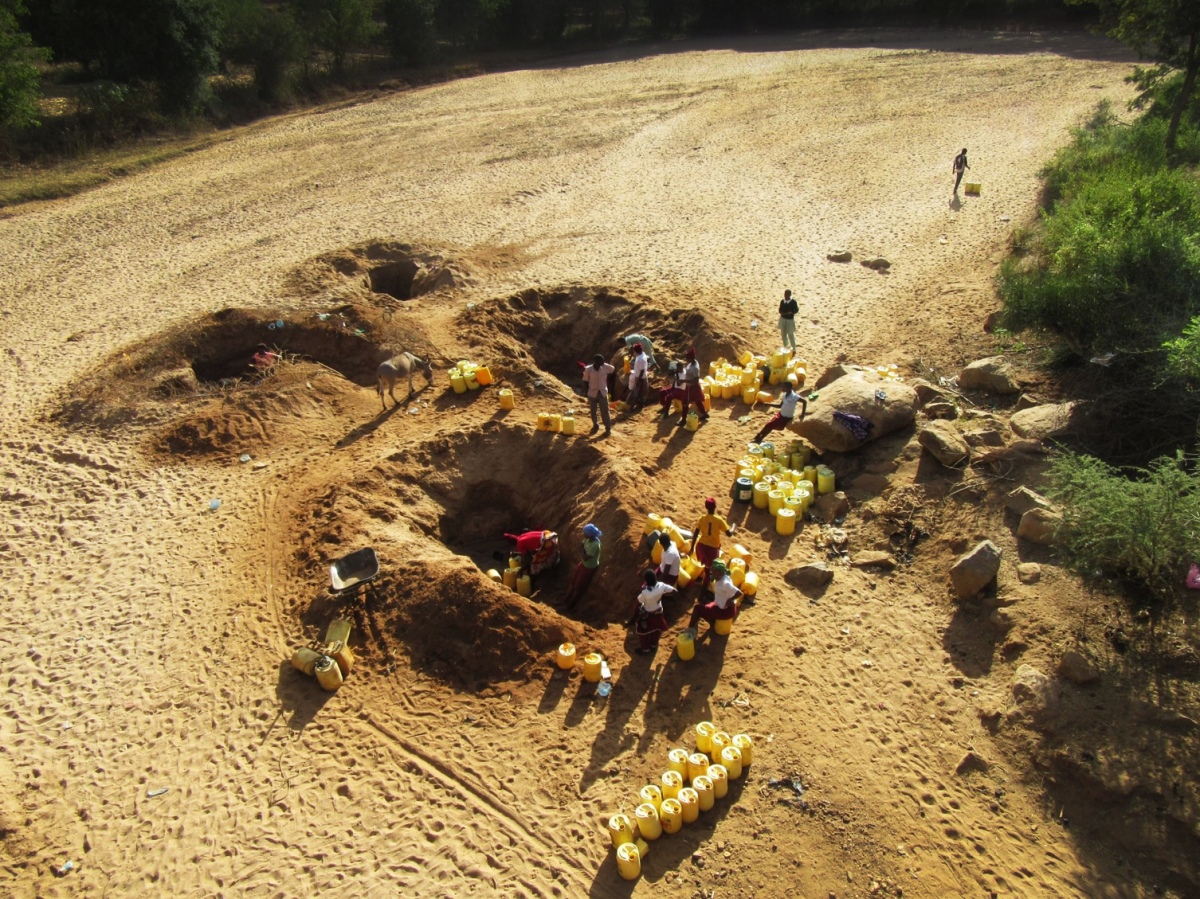If the water sector is going to attain safe water for all then it should deliberately make efforts to move from pilots and projects to systems change and to scale and move from policy development to policy implementation. Potentially innovative finance should focus on funding rural water solutions in an environment with strong institutional frameworks to attain sustainable impact. Building upon the insights of the previous blog under the same title “Service Delivery Management Models, Good Political and Water Governance for Strong Rural Water Systems”, this blog explores the institutional reforms driving a resilient rural water sector. Learn about the significance of Kakamega County Rural Water and Sanitation Corporation (KACRWASCO) activities and other key strategies for achieving scale and long-term sustainability in rural water service provision.
Kakamega County Government Scales Sustainable Rural Water Service Delivery Models
If the water sector is going to attain safe water for all then it should deliberately make efforts move from pilots and projects to systems change and to scale and move from policy development to policy implementation.
In spite of significant investments in Kakamega County’s Rural water supply over the past years, that brought improved access rates, still the water service levels was a big challenge in the Year 2016. Two main challenges existed: (1) Inadequate deteriorating sources and dilapidated infrastructure to meet the demand of the increasing population and (2) Weak institutional capacity to manage the facilities viably.
According to the Kakamega County Water Supply and Urban Sewerage Strategic Plan, (2015-2019) the functionality rates in the county were un-known however 61% of the residents (urban and rural) used improved water sources. Rural water coverage was at 30% according to the Lake Victoria North Water Works Development Agency (LVNWWDA) reports. This meant that 70% of the rural population probably had access to un-improved sources attributing to the county’s slow pace in attaining Sustainable Development Goal 6 (SDG6) then. Despite the existence of the rural water supplies, almost 59% of the functional ones did not perform as per set standards due to lack of professional management.
Some of the institutional arrangements for rural water service delivery were in place however there was need to review the existing ones, to be in tandem with the current water sector devolution dispensation. Using a systemic approach lens it was widely concurred that the technical aspects were not the main constraint to improved water service delivery access rather weak management. Therefore, Sustainable Service Delivery Models emerged as one of the most critical areas to improve in order to respond to the county’s water crisis.
Establishing an Institutional Framework for Resilient Rural Water Management
The Constitution of Kenya 2010 (CoK) Article 43 recognizes that access to safe and sufficient water is a basic human right and assigns under the 4th Schedule the responsibility for water provision and resources management to the county governments in pursuant to article 185 (2), 186 (1) and 187 (2) of the County Governments Act 2012. Further, article 174 (f) of the Constitution provides that one of the objects of devolution is to promote social and economic development and the provision of easily accessible services throughout Kenya. The Water Act 2016 affirms this alongside the National Water Policy 2021 that was being drafted then with clauses on retaining cost recovery principles and ring fencing of the water sector revenue to ensure sustainability. However, the institutional framework for managing the water services delivery in rural areas was still unclear.
Focus on SDMs was fundamental to improving rural water supply sustainability and service levels as it focuses on long-term provision of water services at scale as opposed to the existing discrete one-off community projects. Therefore, a critical determinant of devolution success in Kenya’s Water sector will be how timely the county governments develop and manage resilient systems that are responsive and accountable to public needs. However, Kakamega County still lacked the overall capacity to develop and implement effective institutional framework for SDMs.
The impetus for implementing and scaling promising alternative Service Delivery Management Models from Organisations like SNV was eminent but Scale and Speed proved necessary towards Resilient Rural Water Supplies.
To address these challenges for long term sustainability, from a Systems approach it was imperative that not only should the Service Delivery Management Models be developed but they be anchored on an institutional framework. The USAID KIWASH Project WASH Governance interventions also entailed supporting County Governments systematically improve rural water service delivery through stimulating local government support and political commitment, budget allocations and financing for WASH. Subsequently, the Project’s activities in Kakamega county ambitiously aimed at supporting its County Government establish a legal County Rural Water Service Provider.
The Approach and Process
Section 93 (1), (2) and (3) of the Water Act 2016 provides for Water Service Providers and County Governments to establish different water services delivery options. The County Executive Committee Member (CEC) in-charge of Kakamega Water Department directed adoption of Service Delivery Management options after a situational analysis report by USAID-KIWASH Project on status of targeted rural water supplies including a market research, willingness and ability to pay for water services and commercial viability. This was done concurrently with exchange visits to successful peer WSPs under various SDMs including Nakuru Rural Water and Sanitation Co. and Tachasis Water and Sanitation Company as part of lobbying and awareness creation for legislators to support the process.
- Public Consultations and Handover of rural water projects:
The Water Act 2016, section 139 (1)-(6) requires a public consultation on intent to improve water services provision through SDMs. The CECM through the Kakamega County Assembly Legislators on the Water and Environment Committee held 12 public participation exercises across all the sub-counties and entered into negotiations and agreements with asset owners towards establishing a rural water services provider to manage rural service provision affirmed by Section 94 (2)(3).
The CECM with advice from director water services commissioned handing-over of targeted rural water supplies upon a situational assessment, viability analysis and agreed service delivery option. The director of water services provided a comprehensive inventory of all assets and liabilities: human resources, entire infrastructure (hardware and software) customer inventories, cash and bank balances and project history; all the assets and liabilities were evaluated at current values. Handing over tools included earlier registration documents, the deed of hand-over/surrender and Water services regulations.
- Management Contracting, Licensing and Operationalisation:
The management model adopted was the Rural Water Service Provider as illustrated in Figure 2 below; the unserved area was large it was necessary to have an entity the county will ensure the right to water is met for the rural communities. USAID-KIWASH Project supported Kakamega County Department of Water to follow due process in forming the Rural WSP with institutional setup, planning and investments and monitoring and evaluation activities. This was important since Section 104 of the County Government Act provides that these plans shall be the basis for all budgeting and spending in the county. No public funds shall be appropriated without a planning framework developed by the county executive committee and approved by the county assembly. In consultation with WASREB Kakamega County Department of Water ensured that they meet all the requirements set out under section 77 (2), (3) and (4) of the Water Act 2016. The Kakamega County Rural Water and Sanitation Corporation Bill 2019 was developed and Kakamega County Rural Water Co (KACRWASCO) was registered as a rural water service provider as a public limited liability company and applied for a license including a proposed tariff from the national regulator (WASREB) to ensure compliance with requirements to keep them accountable and viable in their service provision area. Procedurally a new Management, Board of Directors and staff were acquired. Formation of County Rural WSP.

Figure 2 Illustrating SDM for Formation of County Rural WSP
- Investment Planning, Financing and Coordination
Kakamega County Department of Water alongside USAID-KIWASH Project kicked off the process of development of operational policies and plans (County Water Strategies, Water Master Plans, Policies, Monitoring and Evaluation Frameworks, Procurement Guidelines, Consumer Engagement Strategy and CIDP) in accordance to Water Act,2016 Section 94. Additionally, Kakamega County Government allocated targeted subsidy to enable KACRWASCO to meet operation and maintenance costs and increase coverage to rural areas. They also partnered with various Organisations including the Private sector through Acacia Mining on a tripartite agreement to serve 15,000 people and DANCO on leasing of equipment including metres and HDPE pipes and state corporations including Water Sector Trust Fund and Lake Victoria North Water Works Development Agency (LVNWWDA) on financing water infrastructure like tanks, water kiosks and so on . Pursuant to section 94(3) of the Water Act 2016, the County Governments should develop water infrastructure which may be managed a WSPs. Subsequently the county government have invested US$3Million in both urban and rural water sector between 2016-2021.
KACRWASCO ring fences revenues to meet operational and maintenance costs and undertake service expansion against approved annual investment plans and budgets. National and County Government entities, departments, agencies coordinate in the development and provision of rural water services in the County through them. Non state entities consult and coordinate with KACRWASCO through County Government regarding development and provision of rural water services in the County.
- Performance Monitoring and Reporting
KACRWASCO continues to ensure they provide accurate and verified monitoring and evaluation key performance data as set out by WASREB. The County Government sits in the BOD and inspects and monitor elements of water services delivery from the monthly status reports to undertake appropriate remedial measures to ensure effective service delivery.
Moving Forward
The activities towards the establishment of KARWASCO resulted to increased Kakamega County’s rural water coverage from 30% to 57% between 2016-2021 with over 569,600 people accessing safely managed drinking water services and an additional 271,984 accessing basic drinking water services. County investments in the WASH sector were at US$26Million during the Financial Year 2016-2022.
When governments deliver services as per the needs of the people they serve, they can increase public satisfaction and reduce costs. New thinking is needed to deliver the benefits of rural water infrastructure investments to eliminate waste given the dwindling water sector funding. Cognizant of the essential central role that rural water supply systems play towards the progressive realization of the right to water and improving livelihoods to alleviate poverty amid limited Water sector funding, it is imperative that professionalization in management of these systems is adopted at scale with speed. Kakamega’s unfunctional rural water projects successfully increased their integration into formal markets, with closer relationships to WSPs like KACWASCO, counties and institutional actors.
Rural Water Sector Funding had consistently lagged investment needs to address system issues; however, when investment was directed towards well-executed projects that improved outcomes for the network crowding in by market actors increased. Better procurement and vendor contracting were two of the primary mid-term levers that supported small capital-expenditure projects make more efficient use of capital that improved water coverage.
WASH sector coordination through the Multistakeholder Kakamega County WASH Forum supported acquisition and equitable allocation of additional investments from the private sector, recoverable grants, growth in WSP revenues and 36 percent increase in county investments in WASH sector. The forum also supported lobbying and advocacy activities on citizen Right to Water and responsibility of both levels of government in ensuring they have access to safe water. They demanded their rights during 2017 national elections campaigns pushing politicians to include access to safe water in their manifestos that support measure their performance. After attending a social accountability briefing session on attaining SDG6 in Kakamega County organised by USAID-KIWASH Project in partnership with the Kakamega County DWENR the County coined a Clarion Call Amatsi Khumukuru a word in Luhya dialect meaning Water At The Doorstep. Such strong political will supported increase finance and equitable budget allocation for the water sector
Using a citizen-centric approach to delivering government services was helpful in creating ownership of processes and consumers taking responsibility in giving service feedback, paying water bills, reporting leaks, bursts, vandalism. WASREB has begun the process of disseminating the official guidelines for provision of water services in rural and underserved areas in Kenya. This marks WASREB’s first venture into regulation of services in the rural sector, it will significantly increase the uptake of the SDMs, establishing them as the first official guidance of formalizing water services provision in rural areas.
In closing this blog series, the significance of strong political and administrative governance, transformative partnerships, and adaptive strategies shines through in building a resilient rural water sector. Prioritizing safe water access for all and fostering collaboration pave the way for a sustainable water future, fostering prosperity and inclusivity. Thank you for joining this enlightening journey.
About the author:

Euphresia Luseka is a Water Governance Specialist and Co-Lead of RWSN Leave No-One Behind Theme. She is a seasoned Expert with experience in leadership, strategy development, partnerships and management in WASH sector nationally, regionally and internationally. She has specialised in WASH Public Policy, Business Development Support Strategies and Institutional Strengthening of urban and rural WASH Institutions. Euphresia has several publications and research work in her field.















